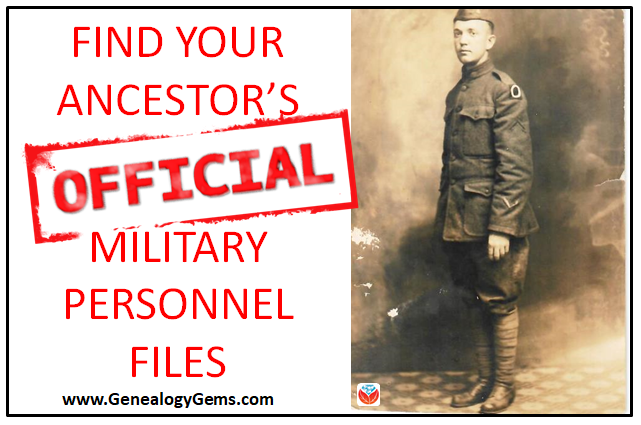Military Terminology for Genealogists: Regulars, Volunteers and Militia
Military terminology for genealogists: What’s the difference between “regulars,” “volunteers” and “militia” in your U.S. ancestors’ military service records? It matters! Researching the records of each–and what you find–may be very different. Expert Michael Strauss explains here.
Military terminology for genealogists (and why it matters)
If you’ve looked through your U.S. ancestors’ military records, you’ve likely come across terms like Regulars, Volunteers, and Militia. What do those terms mean? You’ll want to know because the records were different and so were their terms of service. Also, you may come across relatives who served in more than one capacity.
Regulars were those men who enlisted for a specific period of time as part of the standing army. These men could have enlisted during a war period or peacetime. During the colonial period, they may have been recorded with other names, as either the Continental Line or part of the Flying Camp. The latter were men who served directly under General George Washington. Look for service records of Regulars at the National Archives. (Click here for a free download: Military Service Records at the National Archives by Trevor K. Plante.)
Volunteers were men who served during wartime or any period of emergency whose service was considered to be in the interest of the Federal Government. Recorded from the Revolutionary War onward, these men at that time might also be listed early on as “Associators.” Not to be confused with militia, Volunteers were not subject to fines for non-service. Like the Regulars, records of volunteers’ service are also found at the National Archives.
(A good example of the difference between Regulars and Volunteers can be found during the Spanish American War of 1898. During the war, there was a Regular Army 1st U.S. Cavalry that served alongside the Volunteer 1st U.S. Cavalry. The latter was known as the “Rough Riders,” led by Colonel Theodore Roosevelt.)
The militia was organized initially by colonial, then state and even county governments. (Pennsylvania’s colonial militia is a great example of typical colonial militia laws, rules, and regulations, and parent organizations; click here to read an article about the Pennsylvania militia.) Militia was generally men called up for limited military duty between the ages of 17-60 as needed for the common defense. They were often required to serve for a period of time that was based on the militia laws on the books. The men were subject to fines or penalties for non-service. Records of militia are going to be found at your local or state archives. (Click here for a directory of state archives in the U.S.)
Example: He was a Volunteer and a Regular
My ancestor, Samuel Howard, served during the Civil War. Because of his age he wasn’t able to enlist until 1865, when he turned 18.
- He was first a Volunteer soldier, who served as a substitute for another man who was drafted.
- After his discharge, he enlisted in the Regular Army in 1866. He was assigned to the 13th U.S. Infantry, where he served one month before deserting at Jefferson Barracks, Missouri.
- Samuel was married in 1867 (this may have some relevance to his decision to leave the military). He lived in Pennsylvania from the end of the war until his death in 1913. He is shown here in this 1876 tintype photograph in Lebanon, PA.
Both his Volunteer and Regular Army enlistment forms are shown below. The forms look very similar, as each contains common information asked of a typical recruit. However, they are decidedly different as the one covers his Civil War service and the other his post-war service when he joined the regular Army after the men who served during the war would have been discharged.
Take-home point for you: I believe the key to finding your ancestors, whether they served in the Regulars, were Volunteers or Militiaman, is to look at not only federal records but also search your state records. The latter may be the only place you find proof of military service. Samuel Howard’s Regular Army military service, although brief, was completely unknown to me until a couple of years ago. When he applied for his Civil War pension, which was granted to him, he never mentioned his Regular army service.
And keep learning more helpful military terminology for genealogists! Click here for resources on military acronyms, abbreviations, and dictionaries from the National Archives that can help that you research exactly how your ancestors served.
More military terminology for genealogists
Researching your relatives’ military service can be fascinating, but also frustrating if you aren’t familiar with military terminology, history, and records. In the Military Minutes segment of the free Genealogy Gems Podcast, expert Michael Strauss shares gems like these that can help you explore this important part of your ancestors’ lives. Start listening to the Genealogy Gems Podcast (Michael began contributing in Episode 207) or take a quick peek at more Military Minutes segments: Michael’s explanations of Compiled Military Service Records and Official Military Personnel Files,

Michael Strauss, AG
Michael Strauss, AG is the principal owner of Genealogy Research Network and an Accredited Genealogist since 1995. He is a native of Pennsylvania and a resident of Utah and has been an avid genealogist for more than 30 years. Strauss holds a BA in History and is a United States Coast Guard veteran.









